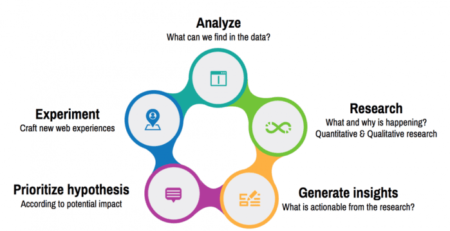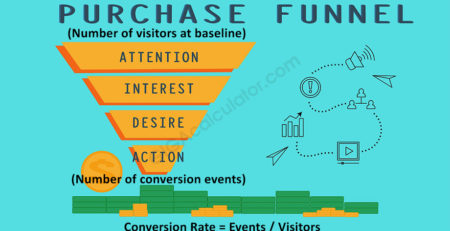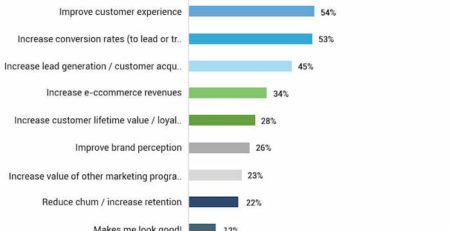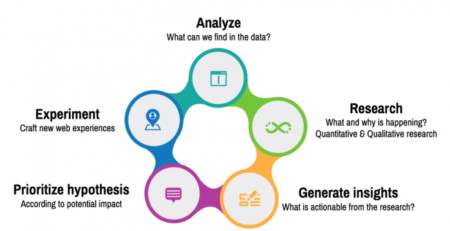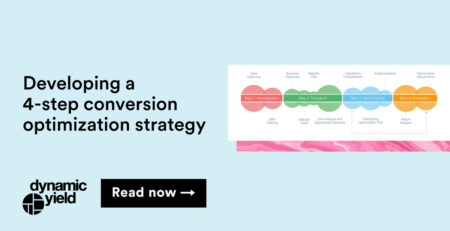How Is Conversion Rate Measured Optimizely?
Looking to measure conversion rates with Optimizely? Well, you’ve come to the right place! In this guide, we’ll dive into how conversion rates are measured using Optimizely, a powerful tool that helps businesses optimize their websites and increase customer engagement. So, let’s get started and explore the world of conversion rate measurement with Optimizely!
Conversion rate measurement is a crucial aspect of any digital marketing strategy. It allows businesses to understand how effective their website is at converting visitors into customers. With Optimizely, you can easily track and analyze the performance of your website’s conversion rates, helping you make data-driven decisions to improve your website’s performance and boost your bottom line.
Wondering how Optimizely measures conversion rates? It’s all about setting up goals and tracking specific actions that visitors take on your website. By defining what actions you consider as conversions (such as making a purchase, filling out a contact form, or subscribing to a newsletter), you can use Optimizely’s tracking capabilities to measure and analyze the success of these actions. Through this data, you can gain valuable insights into your visitors’ behavior and optimize your website accordingly.
Now that you have a basic understanding of how conversion rates are measured using Optimizely, let’s delve deeper into the process and explore the various features and strategies that can help you achieve optimal results. Get ready to take your website’s conversion rates to new heights with Optimizely!
1. Set up goals in Optimizely.
2. Track conversions using event tags.
3. Analyze your conversion rate in Optimizely’s reporting dashboard.
By following these steps, you can effectively measure your website’s conversion rate using Optimizely.
How is Conversion Rate Measured in Optimizely?
Optimizely is a powerful tool used for optimizing websites and increasing conversion rates. It allows businesses to test different variations of their website and analyze how these changes impact user behavior and conversion. Through its advanced analytics capabilities, Optimizely provides valuable insights into the effectiveness of different elements on a website and helps businesses make data-driven decisions to improve their conversion rates. In this article, we will explore the various methods used to measure conversion rates in Optimizely and how businesses can leverage this information to optimize their websites.
Understanding Conversion Rate Optimization
Before delving into how conversion rates are measured in Optimizely, it’s important to understand the concept of conversion rate optimization (CRO). Conversion rate optimization is the systematic process of improving the performance of a website in terms of converting visitors into customers. The goal is to increase the percentage of visitors who take the desired action, such as making a purchase, signing up for a newsletter, or completing a form.
In order to optimize conversion rates, businesses need to track and measure the effectiveness of their website elements and identify areas where improvements can be made. This is where Optimizely comes into play, offering a range of tools and features that enable businesses to conduct experiments, collect data, and analyze user behavior to make informed decisions for improving conversion rates.
Measuring Conversion Rates
When it comes to measuring conversion rates in Optimizely, there are several methods that can be used. Let’s explore some of the most common techniques:
1. Goal Tracking:
The first and most basic method of measuring conversion rates in Optimizely is through goal tracking. Goals can be set up to track specific actions or events that indicate a successful conversion. For example, a goal might be set up to track the number of newsletter sign-ups or purchases made on a website. Optimizely provides a simple and straightforward interface for setting up goals and tracking their conversion rates.
By tracking goals, businesses can gain valuable insights into how different variations of their website or specific elements impact conversion rates. This information can then be used to make data-driven decisions to optimize conversion rates.
2. A/B Testing:
A/B testing is another powerful method offered by Optimizely to measure conversion rates. With A/B testing, businesses can create multiple variations of a webpage and randomly direct users to these different variations. By tracking user behavior on each variation, businesses can analyze conversion rates and determine which version performs better.
For example, a website might have two different versions of a call-to-action button – one in red and one in blue. By using Optimizely’s A/B testing feature, businesses can measure the conversion rates for each version and determine which color is more effective in enticing users to take action.
A/B testing allows businesses to compare different elements or variations side by side, enabling them to make informed decisions about which changes are more likely to improve conversion rates.
3. Multivariate Testing:
While A/B testing compares single elements or variations, multivariate testing takes it a step further by allowing businesses to test multiple combinations of elements simultaneously. This method is especially useful when businesses want to test the impact of multiple changes on conversion rates.
For example, a website might have different variations of its headline, call-to-action button, and product image. By using Optimizely’s multivariate testing feature, businesses can analyze the combination of these elements and determine which specific combination performs best in terms of conversion rates.
By utilizing multivariate testing, businesses can gain insights into the interaction between different elements and identify the most effective combination for improving conversion rates.
Benefits of Measuring Conversion Rates in Optimizely
Measuring conversion rates in Optimizely offers numerous benefits for businesses looking to optimize their websites and improve their conversion rates. Let’s explore some of the key advantages:
1. Data-Driven Decision Making:
By measuring conversion rates in Optimizely, businesses can make data-driven decisions to improve their websites. Instead of relying on assumptions or guesswork, businesses can rely on actual data and insights to guide their optimization efforts. This helps in identifying the most effective changes that drive conversions and eliminating elements that are not performing well.
By utilizing data, businesses can take a systematic approach to optimization and ensure that their efforts are targeted and impactful.
2. Improved User Experience:
An optimized website not only increases conversion rates but also enhances the overall user experience. By analyzing user behavior and conversion rates in Optimizely, businesses can identify pain points or areas where users are dropping off. This information can then be used to make improvements and provide a better user experience, leading to increased customer satisfaction and loyalty.
By continuously optimizing the user experience, businesses can create a seamless and enjoyable journey for their website visitors, ultimately resulting in higher conversion rates.
Tips for Effective Conversion Rate Measurement in Optimizely:
Here are some tips to ensure effective measurement of conversion rates in Optimizely:
1. Clearly Define Goals:
Before starting any optimization efforts, it’s crucial to clearly define the goals you want to track and measure. Having well-defined goals helps in determining the success of the optimization process and provides a clear direction for your experiments.
2. Set Up Proper Tracking:
Ensure that you have set up proper tracking for your goals. Use Optimizely’s goal tracking feature to accurately measure conversion rates and gain insights into the effectiveness of your experiments.
3. Analyze and Iterate:
Regularly analyze the data and insights provided by Optimizely to gain a deeper understanding of user behavior and conversion rates. Use this information to iterate and make informed decisions for further optimization.
4. Test Multiple Variations:
Don’t be afraid to test multiple variations of your website elements. A/B testing and multivariate testing allow you to experiment with different options and determine the most effective changes for improving conversion rates.
5. Continuously Optimize:
Optimization is an ongoing process. Keep experimenting, analyzing, and optimizing to ensure that your website is always performing at its best. Conversion rates can fluctuate over time, so it’s important to stay proactive and make necessary adjustments as needed.
Key Takeaways
Measuring conversion rates in Optimizely is a crucial step in optimizing a website and increasing the likelihood of visitors taking the desired action. By utilizing tracking methods such as goal tracking, A/B testing, and multivariate testing, businesses can gain valuable insights into user behavior and make informed decisions to improve conversion rates.
It’s important to approach conversion rate measurement in Optimizely with a data-driven mindset and continuously iterate and optimize based on the insights gained. By setting clear goals, tracking them effectively, and regularly analyzing the data, businesses can ensure that their optimization efforts yield positive results and ultimately lead to increased conversion rates and improved user experiences.
Key Takeaways: How is Conversion Rate Measured in Optimizely?
- Conversion rate in Optimizely is the percentage of visitors who complete a desired action, like making a purchase or signing up.
- Optimizely tracks conversions by adding a snippet of code to your website that captures the action when it occurs.
- Conversion rates can be measured for different segments, such as specific demographics or traffic sources.
- Optimizely provides insights and analytics to help you optimize your conversion rates.
- Regularly monitoring and analyzing your conversion rate can help identify areas for improvement and increase business success.
Frequently Asked Questions
Here are some common questions related to measuring conversion rates with Optimizely:
1. How does Optimizely measure conversion rates?
Optimizely measures conversion rates by tracking the number of users who complete a specific goal or action on your website. This could be anything from making a purchase to filling out a form or clicking on a specific button. When a user completes the desired action, Optimizely counts it as a conversion and calculates the conversion rate by dividing the total number of conversions by the total number of visitors or sessions.
Optimizely offers robust tracking and reporting features, allowing you to set up and track multiple goals simultaneously. You can also segment your data by different criteria, such as traffic sources or user demographics, to gain deeper insights into your conversion rates and optimize your website accordingly.
2. Can I track conversion rates for specific pages or elements on my website?
Yes, with Optimizely, you can track conversion rates for specific pages or elements on your website. This is done by setting up custom goals in the Optimizely dashboard. You can define the specific URL or element you want to track, such as a button click or form submission, and Optimizely will track the conversions for that specific goal.
By tracking conversion rates for specific pages or elements, you can identify which parts of your website are performing well and which need improvement. This information can help you make data-driven decisions to optimize your website for higher conversions.
3. Does Optimizely provide A/B testing for measuring conversion rates?
Yes, Optimizely offers A/B testing as one of its core features for measuring conversion rates. A/B testing allows you to compare two or more variations of a webpage or element to determine which performs better in terms of conversions. You can create different variations of your website and set up goals to measure the conversion rates for each variation.
Optimizely’s A/B testing feature provides statistical analysis to determine if the differences in conversion rates between variations are statistically significant. This helps you make informed decisions about which variation is the most effective in driving conversions and optimizing your website.
4. Can I integrate Optimizely with other analytics platforms to measure conversion rates?
Yes, Optimizely can be integrated with other analytics platforms to measure conversion rates. Optimizely offers integrations with popular platforms like Google Analytics, Adobe Analytics, and Mixpanel, allowing you to sync your conversion rate data with your existing analytics tools.
By integrating Optimizely with your analytics platform, you can have a holistic view of your website performance and conversion rates. This integration enables you to analyze conversion rates alongside other important metrics and gain a deeper understanding of how different factors impact your overall business goals.
5. How can I analyze and interpret the conversion rate data in Optimizely?
Optimizely provides a comprehensive dashboard with various reports and visualization options to analyze and interpret conversion rate data. You can view detailed conversion rate metrics, such as conversion rate by variation, conversion rate by segment, and conversion rate over time. These reports help you identify trends, patterns, and areas for improvement.
Additionally, Optimizely offers statistical significance testing to determine if the observed differences in conversion rates are statistically significant or simply due to chance. This statistical analysis allows you to confidently make data-driven decisions based on reliable insights from your conversion rate data.
Summary
In this article, we learned about how conversion rate is measured using Optimizely. Conversion rate is a way to measure how many people take a desired action on a website, like making a purchase or signing up for a newsletter. Optimizely helps track these actions and gives insights on how to improve them.
To measure conversion rate, Optimizely uses a simple formula: the number of conversions divided by the number of visitors. This gives us the percentage of visitors who took the desired action. Optimizely also allows for A/B testing, where different versions of a website are shown to visitors to see which one performs better. This helps website owners make data-driven decisions to optimize their conversion rates.
By understanding how conversion rate is measured and using tools like Optimizely, website owners can make improvements that lead to more people taking the desired actions, ultimately helping their businesses grow.


